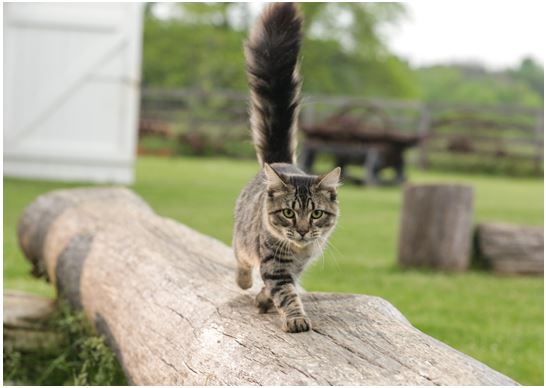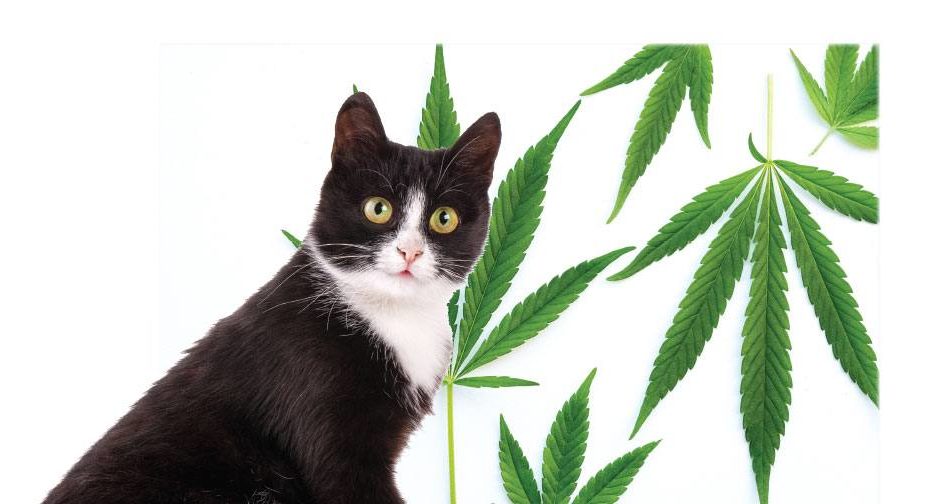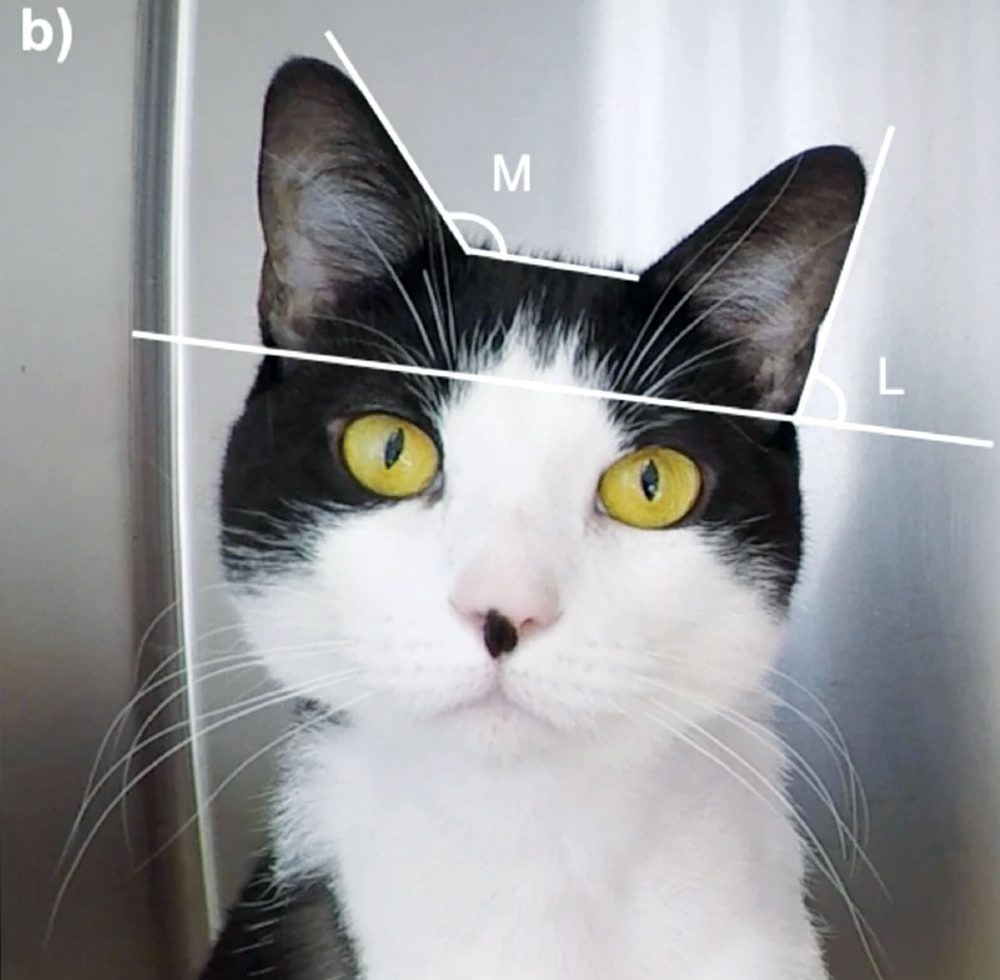
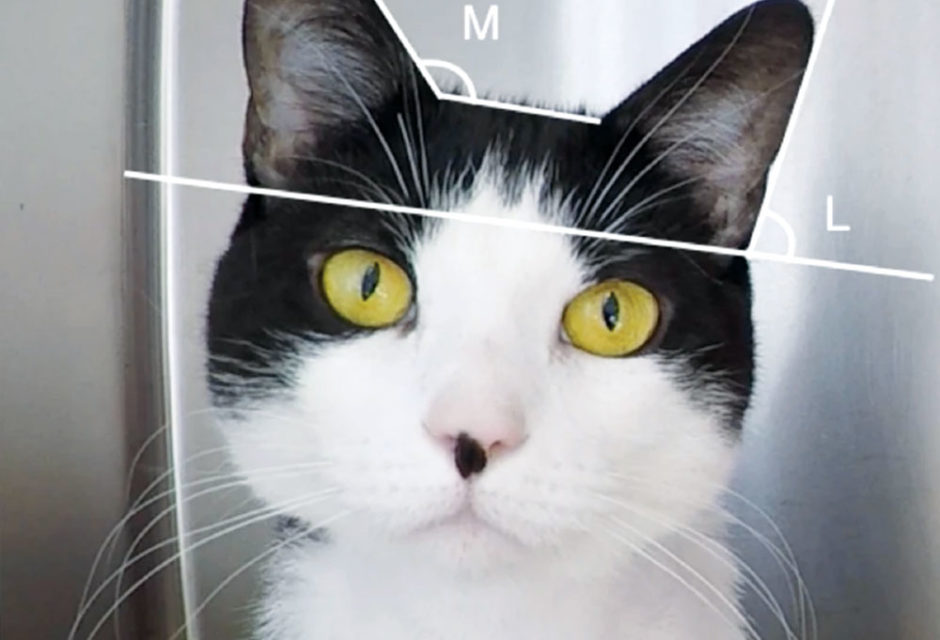
Cat Pain Scale
A new study provides a much needed, simple scale to assess feline pain

Dr. Daniel Pang and Barney Courtesy of Riley Brandt/University of Calgary.
A veterinary research team from the University of Calgary has created a new Feline Grimace Scale for vets, veterinary students, and cat owners alike.
An ongoing issue with the treatment of cats is that pain frequently goes unidentified and therefore unaddressed.
“Cats in particular can be hard to assess for the presence of pain, meaning that they often receive less pain-relieving medication than dogs, even when they undergo similar surgeries or have similar painful diseases,” notes Dr. Daniel Pang, one of researchers.
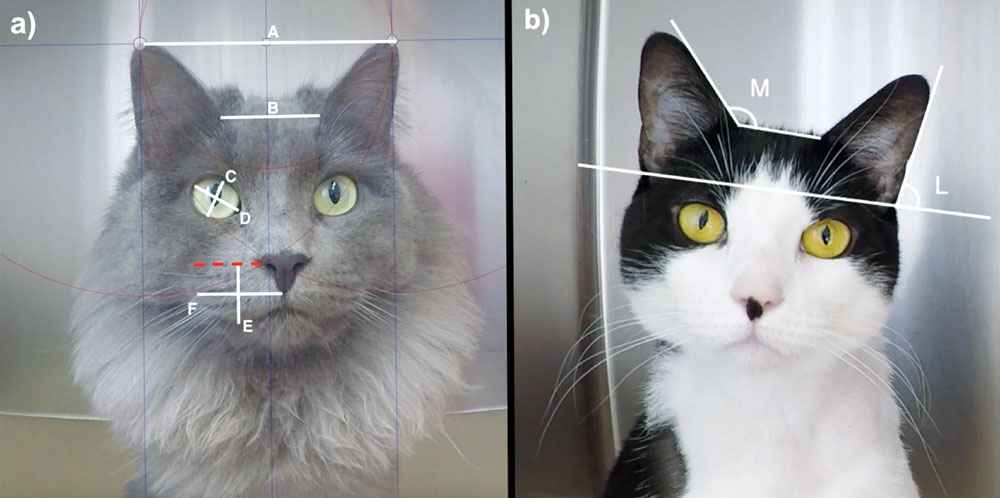
Evangelista et al. 2019 Scientific Reports 9, 19128.
Measured angles and distances for the ears, eyes and muzzle.
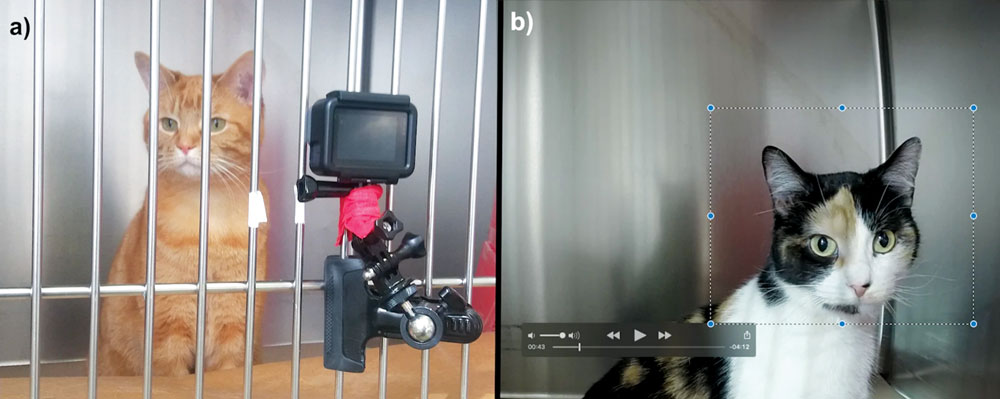
Evangelista et al. 2019 Scientific Reports 9, 19128.
Video-recording of cats. A wide-angle lens camera was placed between the cage bars and cats were video-recorded undisturbed for 6 min.
In the study, “Facial expressions of pain in cats: the development and validation of a Feline Grimace Scale,” the researchers observed and assessed a total of 70 cats over a nine-month period. The cats selected for assessment all varied in age, breed, and gender. Twenty of the cats were healthy while another 50 cats were those admitted to the emergency and critical care unit at the veterinary teaching hospital in Quebec, where the research was conducted. (All of the cats included in the study were only recruited and observed after the team received written consent from their owners.) One of the biggest challenges in doing research like this?
“Patience! As with all research, things never go as planned and as in this case, things can take much longer than expected,” says Dr. Daniel Pang. “Because we did not cause any pain in the cats we studied (we depended on cats being presented to our emergency service), we had to wait for cats to be brought in. This is always unpredictable.” All the cats were video-recorded undisturbed in their cages in this case-control study. Painful cats received analgesic treatment and videos were repeated one hour later. Five action units were identified: ear position, orbital tightening, muzzle tension, whiskers change, and head position.
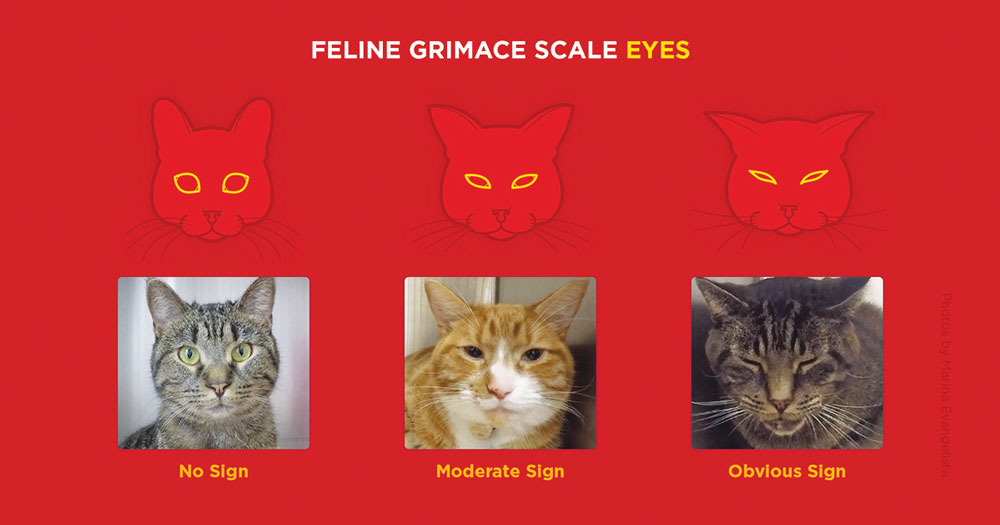
Grimace scale diagram University of Calgary, adapted from Evangelista et al. 2019 Scientific Reports 9, 19128
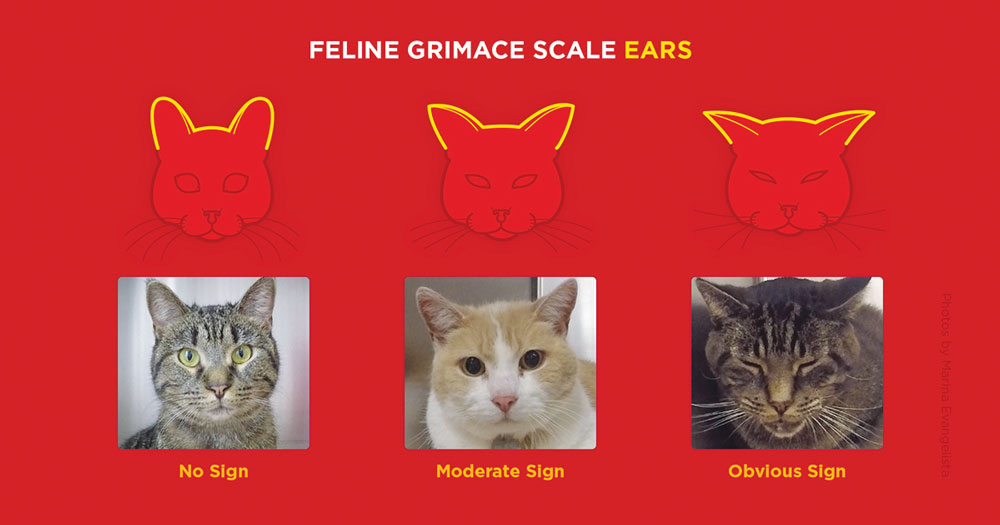
Grimace scale diagram University of Calgary, adapted from Evangelista et al. 2019 Scientific Reports 9, 19128
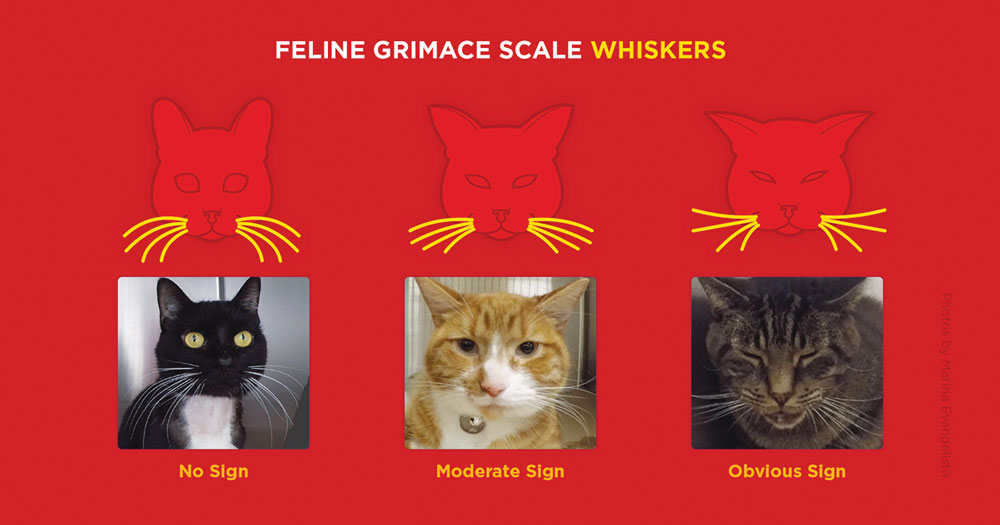
Grimace scale diagram University of Calgary, adapted from Evangelista et al. 2019 Scientific Reports 9, 19128
The research, however painstaking, resulted in a clear cut illustrated scale by which to assess the facial expression of cats (via eye, whisker, and ear position) and assign a corresponding level of pain. It is the researchers’ hope that these grimace scales will result in cats receiving timely veterinary care and, once at the vet, receiving an appropriate level of pain management.
Find the full study here.
Join the newsletter and never miss out on cat content again!
"*" indicates required fields
By clicking the arrow, you agree to our web Terms of Use and Privacy & Cookie Policy. Easy unsubscribe links are provided in every email.





